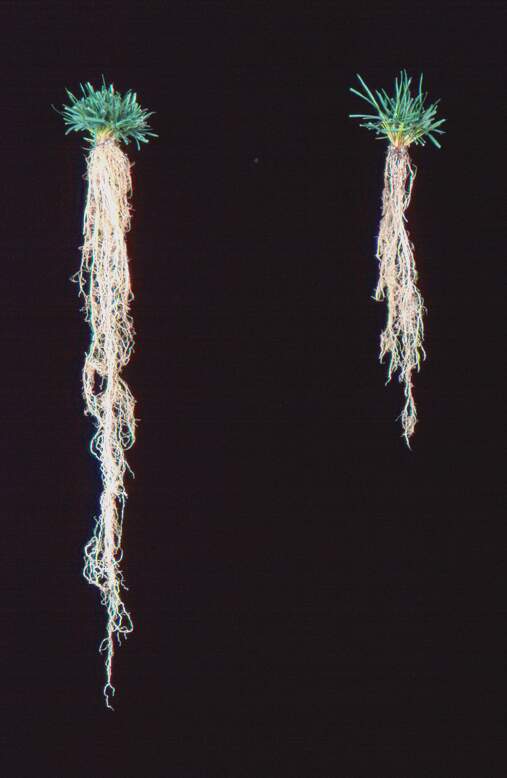Selecting for drought resistance is dynamic and is affected by many genetic factors. Studies have been conducted by NexGen Turf Research to demonstrate that enhancing root systems has a positive effect on drought performance. Following a rainfall event water moves downward through the soil profile. Plants with extended roots grow deeper into the soil profile and can utilize water for a longer period of time. Our selection method was developed to improve the rooting ability of grass cultivars.
Clipping, Weighing, & Recording Root StudyClipping, Weighing & Recording Root StudyTables are designed to hold tubes filled with silica sand. Tubes are set at a slight angle and each tube has its own water emitter. The emitters are set on a timer and each tube receives the same amount of water. The angle of the tubes promotes the roots to grow mainly along one side of the tube to allow for easier harvesting. The plants are clipped once per week and the clippings are weighed.
Washing Roots To Be WeighedHarvesting Root Study TubesPlants are selected with clipping amounts that do not exceed the average of the initial population. Plants with deep roots often have more shoot mass. Therefore, it is important to select against increased shoot mass so that mowing frequency is not increased.
After plants with very low or high amounts of shoot mass are discarded, the remaining plants are examined to locate the ones with superior roots.
Studies involving Tall Fescue, Kentucky Bluegrass and Texas x Kentucky Bluegrass have been conducted using root study tubes, a rain-out shelter, and field studies.

